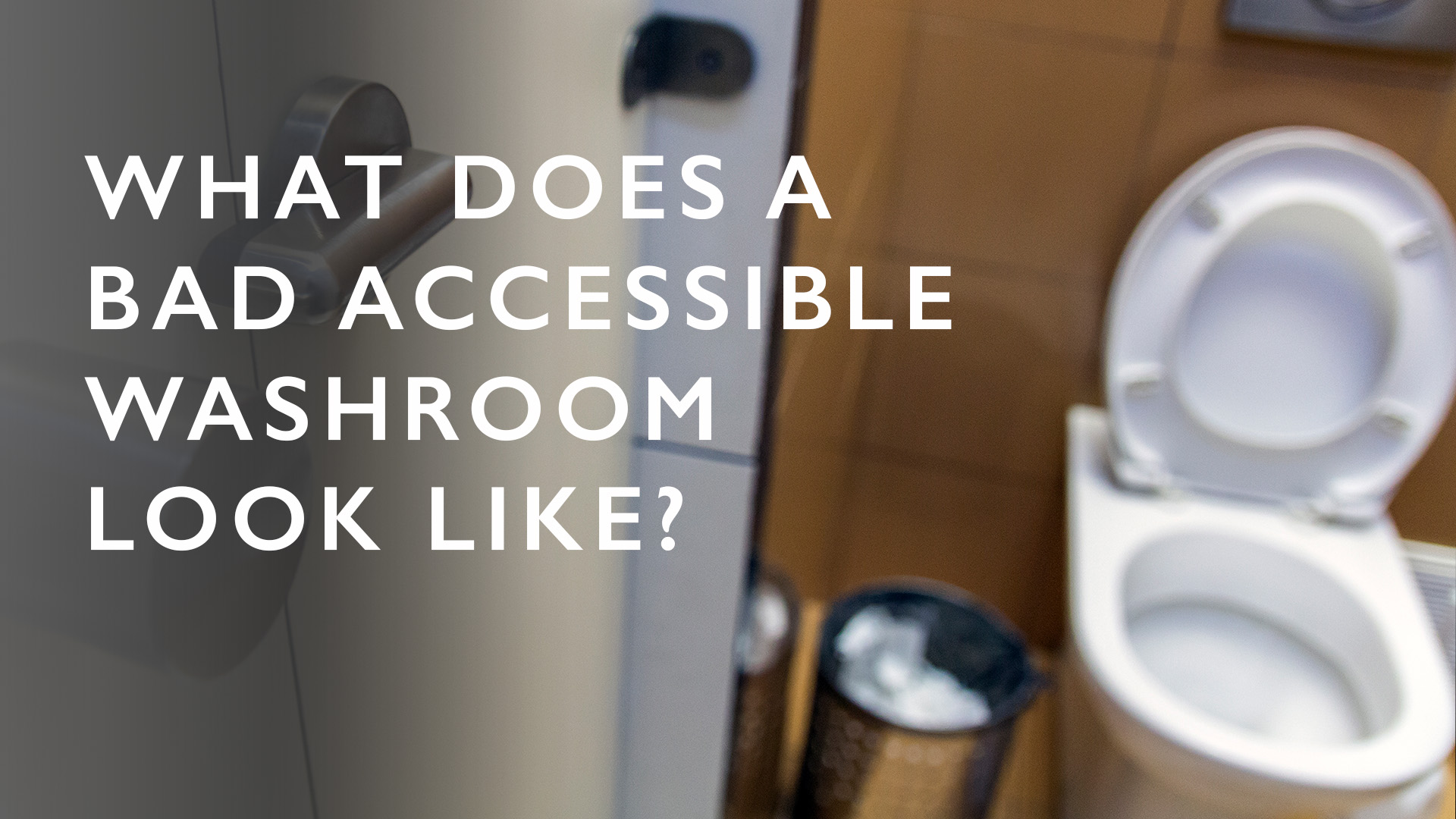19 November 2024
Watch time: 2 minutes / Read time: 3 minutes / Updated: November 20, 2024
Before designing a wheelchair accessible toilet in a public or commercial washroom, it is crucial to understand the common mistakes that can occur if the space is not carefully planned and if accessibility regulations like Document Part M and BS8300 are not properly adhered to.
Watch our video where one of Dolphin’s washroom consultants highlights the flaws of a poorly designed accessible washroom layout and explains why it fails to meet the needs of individuals with disabilities.

View the Dolphin Doc M Pack range.
10 Accessible washroom design fails
1. Missing toilet waste bin
Providing a sanitary bin does not mean you can overlook the need for a separate waste bin.
These two bins serve entirely different purposes, and both are essential for a well-equipped accessible washroom.
2. Improper Placement of Flush Lever
Forcing users to reach across the toilet to flush increases the risk of tipping or injury, making this a poorly designed accessible washroom layout.
The toilet flush lever should be positioned on the same side as the wheelchair transfer area for easier access.
3. Improper Tap Placement
If a user needs to wash their hands while seated, having the tap on the opposite side can make it extremely difficult, if not impossible, to reach.
The commercial tap should be installed on the side of the washbasin closest to the WC pan.
4. Incorrect Soap Dispenser placement
The soap dispenser must be positioned within easy reach of users seated on the WC pan, allowing them to access soap before using the tap.
5. Improper Placement of Hand Drying Appliance
The accessible hand dryer appliances, such as paper towel dispenser and automatic hand dryer, should be positioned within easy reach of users seated on the WC pan, ensuring they can dry their hands without difficulty.
6. Tangled Alarm Pull Cord
A tangled emergency alarm pull cord can prevent a user from calling for help in an urgent situation, putting their safety at serious risk and highlighting the flaws of a poorly designed accessible washroom.
7. Low-Quality Washroom Products
While plastic washroom fittings might seem like a cost-effective option, they often fail to create a positive impression.
They can make the space feel like an afterthought, rather than a thoughtfully designed washroom that enhances the user’s comfort and wellbeing.
8. Missing shelf
Without a bag shelf or colostomy shelf, users have no convenient place to set down their belongings during a transfer to the WC pan, or to place a colostomy bag if needed.
This lack of storage creates unnecessary challenges for the user.
9. No Full-Length Doc M Mirror
While a mirror above the washbasin is useful, a full-length mirror is essential for wheelchair users, allowing them to check their appearance and tidy up before leaving the washroom.
10. Absence of Coat Hooks
The lack of coat hooks makes it difficult for wheelchair users to hang their bags or coats while using the washroom.
As a result of this poorly designed accessible washroom blunder, they are left with no choice but to either struggle to keep their belongings with them or place their clothing on the unsanitary floor.

Overall User Experience
A poorly designed accessible washroom shows a lack of consideration for user needs, and a failure to create a welcoming environment.
While features may meet compliance standards, it is essential to prioritise the user experience by addressing the challenges faced by individuals with disabilities.
BS8300 offers key guidance on dimensions and washroom products for a safe and comfortable washroom experience.